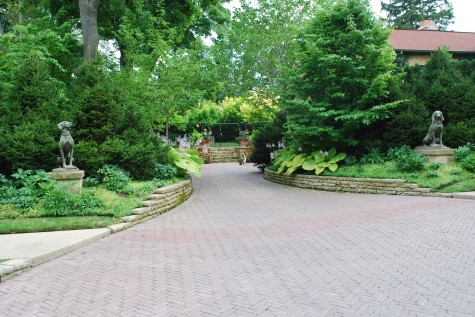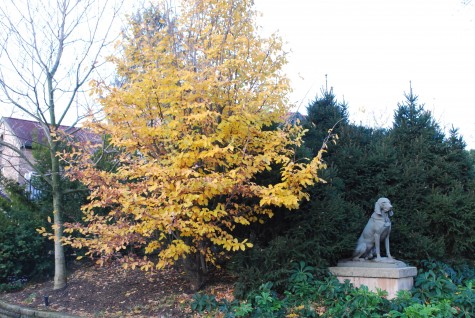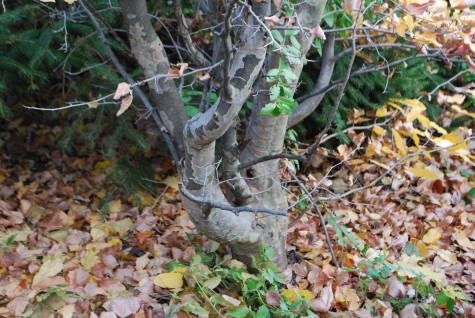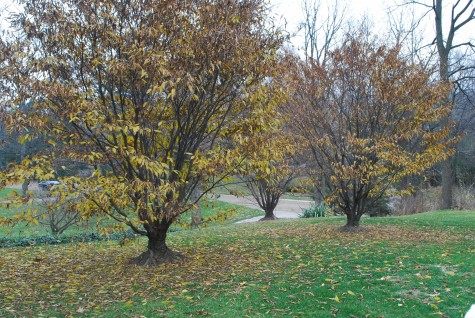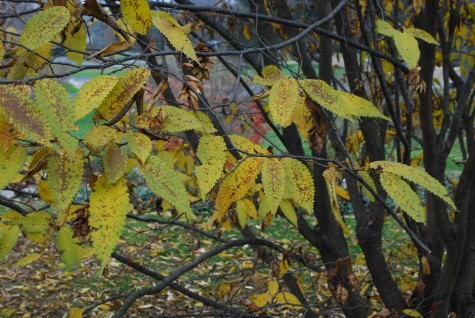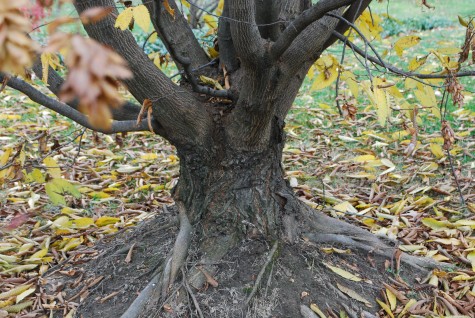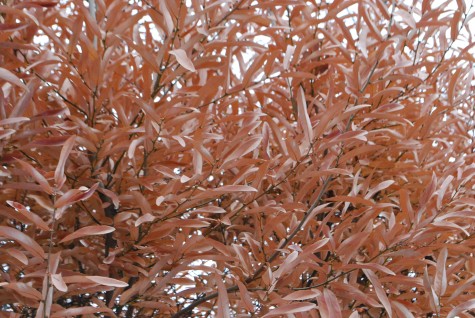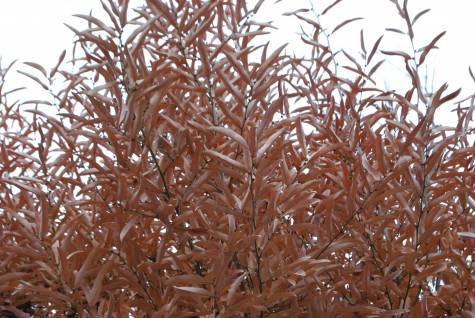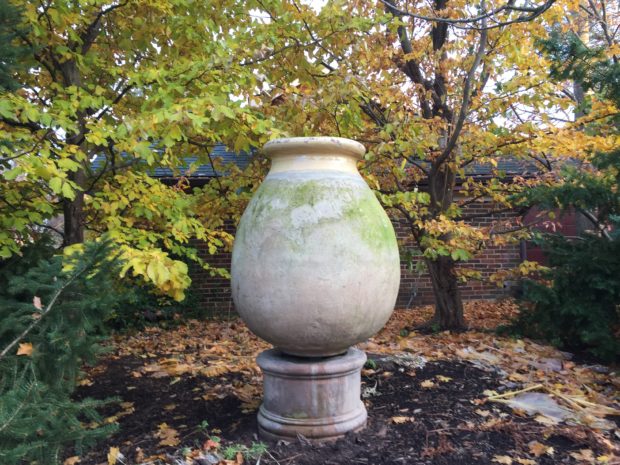 My designing life may have been consumed with finishing up as many of our landscape projects as possible, and dealing with the demands of our holiday and winter container work, but the garden has never been far from my mind. Every day, as I am loading up the corgis in the morning, or preparing for them to disembark in the evening, I see what is pictured above. This antique French pot from Biot sits on an Italian terracotta socle, which in turn sits on top of the substantial stump of a maple that succumbed years ago to girdling roots. It was made in the early part of the 20th century by a French pottery that is no longer. I love the shape, the color, and the history. The pale yellow glazed rim finishes the hand thrown raw clay body. There is ample evidence of its age. Moss spores have infiltrated the surface, and taken up residence. I have never felt the need to plant this pot, as I doubt a planting would make it look any better than it already does. It pleases me to see this pot every day, in every season, year after year. In the summer, the ground is covered by Sum and Substance hostas, and ferns. In mid-November, the pot is embraced by a pair of Parrotias, just coming into fall color.
My designing life may have been consumed with finishing up as many of our landscape projects as possible, and dealing with the demands of our holiday and winter container work, but the garden has never been far from my mind. Every day, as I am loading up the corgis in the morning, or preparing for them to disembark in the evening, I see what is pictured above. This antique French pot from Biot sits on an Italian terracotta socle, which in turn sits on top of the substantial stump of a maple that succumbed years ago to girdling roots. It was made in the early part of the 20th century by a French pottery that is no longer. I love the shape, the color, and the history. The pale yellow glazed rim finishes the hand thrown raw clay body. There is ample evidence of its age. Moss spores have infiltrated the surface, and taken up residence. I have never felt the need to plant this pot, as I doubt a planting would make it look any better than it already does. It pleases me to see this pot every day, in every season, year after year. In the summer, the ground is covered by Sum and Substance hostas, and ferns. In mid-November, the pot is embraced by a pair of Parrotias, just coming into fall color.
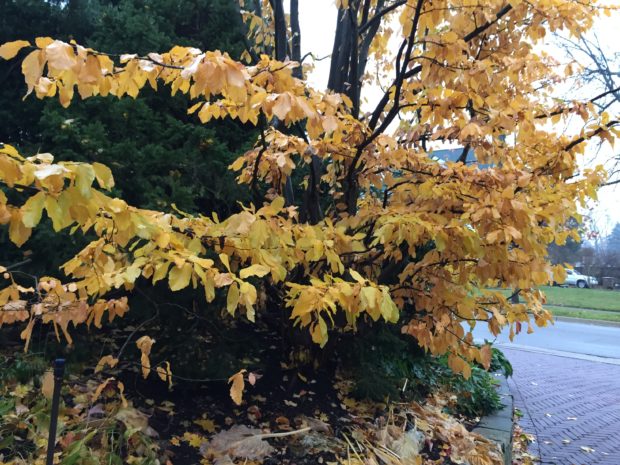 This essay is not really about my old garden pot. It is about a not so well known and underused small growing tree that saves the best of its beauty for the last of the year. Parrotia persica is the only species in the genus Parrotia. The tree matures at about 25′ tall, and as wide. My group of four trees has been in the ground for close to 20 years, and might be 18 feet tall. Suffice it to say they grow very slowly. It is irregular growing, and branches out quite close to the ground. Parrotia persica is one of only two only species in the genus Parrotia. The loosely oblong leaves are quite reminiscent of hamamelis, or witch hazel. This is not surprising, as they are in the same family. Those leaves have a purple/copper colored tinge when they emerge in the spring, which matures to a deep rich green in summer.
This essay is not really about my old garden pot. It is about a not so well known and underused small growing tree that saves the best of its beauty for the last of the year. Parrotia persica is the only species in the genus Parrotia. The tree matures at about 25′ tall, and as wide. My group of four trees has been in the ground for close to 20 years, and might be 18 feet tall. Suffice it to say they grow very slowly. It is irregular growing, and branches out quite close to the ground. Parrotia persica is one of only two only species in the genus Parrotia. The loosely oblong leaves are quite reminiscent of hamamelis, or witch hazel. This is not surprising, as they are in the same family. Those leaves have a purple/copper colored tinge when they emerge in the spring, which matures to a deep rich green in summer.
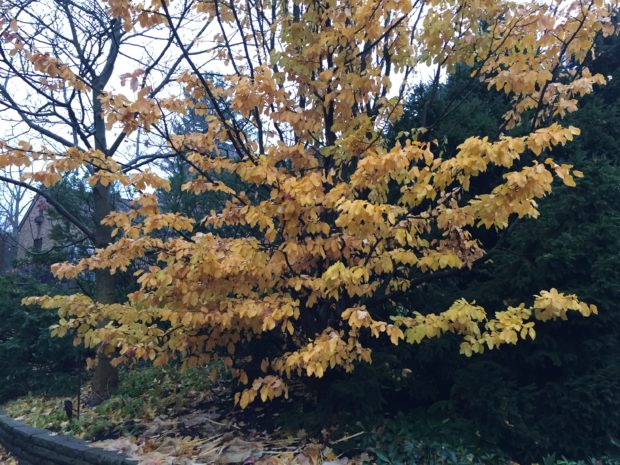 Persian ironwood is reputed to have some of the best fall color of any deciduous tree. A single tree may have red, yellow, orange and maroon colored leaves at the same time. Only once in a while do I get fall color like this. In most years, the leaves turn yellow and peach, long after many other trees have already dropped their leaves. By the time they begin turning color, all of the hostas and ferns that grow in proximity to them have gone dormant.
Persian ironwood is reputed to have some of the best fall color of any deciduous tree. A single tree may have red, yellow, orange and maroon colored leaves at the same time. Only once in a while do I get fall color like this. In most years, the leaves turn yellow and peach, long after many other trees have already dropped their leaves. By the time they begin turning color, all of the hostas and ferns that grow in proximity to them have gone dormant.
 The branch structure and exfoliating bark endows this tree with considerable winter interest. The old bark sheds in a patchy way, revealing the new bark underneath. It is not uncommon for the bark on my trees to have green, yellow, peach, gray and brown coloration all at the same time. The bark does not shed in huge sheets like the London Plane. I rarely notice the flaking bark on the ground. The literature says that parrotias bloom in very early spring, much like witch hazel. Clusters of red stamens are surrounded by brownish bracts; the flowers do not have much in the way of petals. The bloom is subtle. That said, I have never seen my parrotias bloom.
The branch structure and exfoliating bark endows this tree with considerable winter interest. The old bark sheds in a patchy way, revealing the new bark underneath. It is not uncommon for the bark on my trees to have green, yellow, peach, gray and brown coloration all at the same time. The bark does not shed in huge sheets like the London Plane. I rarely notice the flaking bark on the ground. The literature says that parrotias bloom in very early spring, much like witch hazel. Clusters of red stamens are surrounded by brownish bracts; the flowers do not have much in the way of petals. The bloom is subtle. That said, I have never seen my parrotias bloom.
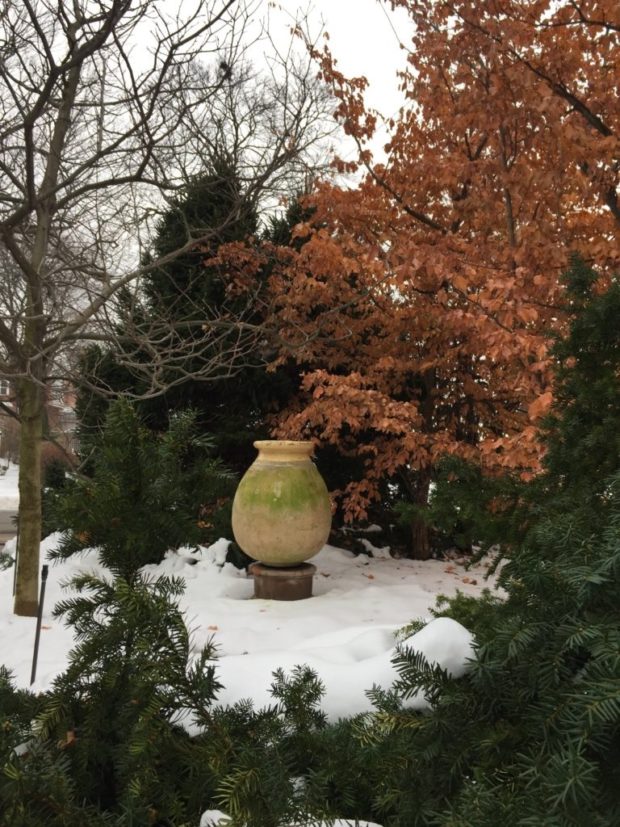 At the end of December, the trees still had most of their leaves. The yellow fall color had matured to a rich coppery color. Though the landscape and garden has gone dormant, this spot is still beautiful in color and texture. These leaves will hold most of the winter, no matter how tough that winter might be. Some leaves will last long enough to be pushed off by the new leaves emerge in the spring. Should you have a winter season, a parrotia is at its most beautiful at that time of year. The picea abies “mucronata”, or dwarf Norway spruces, and the parrotias completely screen this part of my garden from the street.
At the end of December, the trees still had most of their leaves. The yellow fall color had matured to a rich coppery color. Though the landscape and garden has gone dormant, this spot is still beautiful in color and texture. These leaves will hold most of the winter, no matter how tough that winter might be. Some leaves will last long enough to be pushed off by the new leaves emerge in the spring. Should you have a winter season, a parrotia is at its most beautiful at that time of year. The picea abies “mucronata”, or dwarf Norway spruces, and the parrotias completely screen this part of my garden from the street.
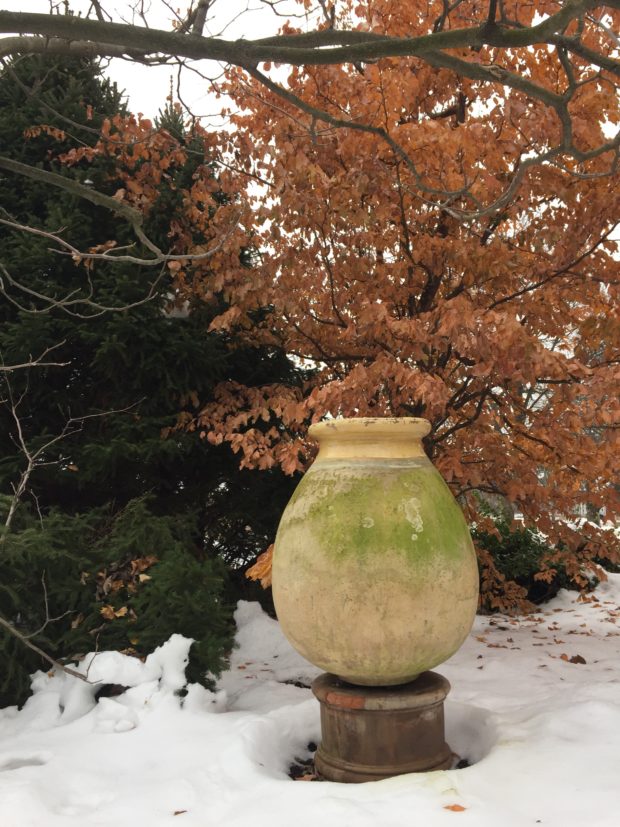 The old pot has a sheltered place to be.
The old pot has a sheltered place to be.
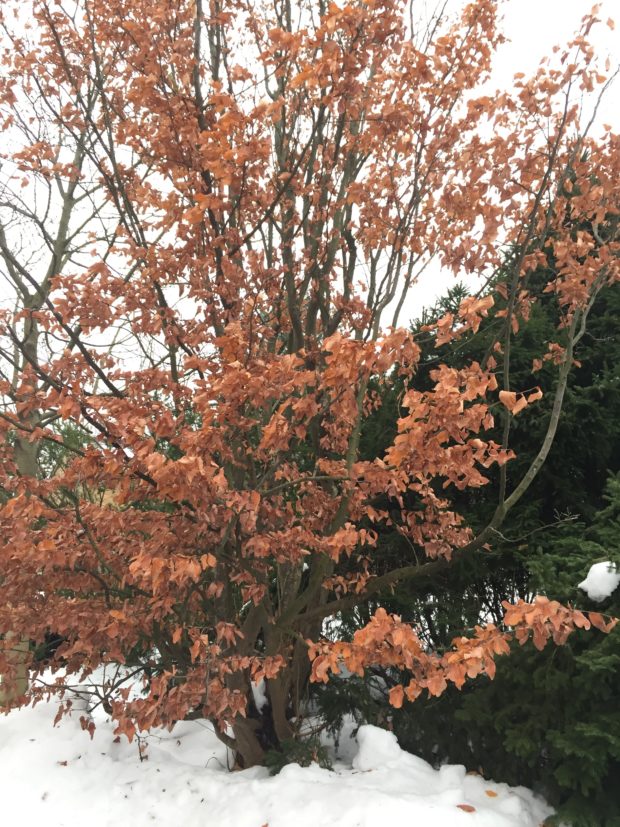 As a result of the horrifically cold winter we had three years ago, I did have twig die back in the midsection of this tree. That damage is easy to see in the picture above. I would have thought the damage from the cold and wind would have been most prominent at the top of the tree. I cannot explain what happened, but the trees have begun to recover. I have never seen any damage from insects or disease, and I do nothing to look after it besides watering the hostas around them during dry spells. Parrotias are remarkably healthy and just about maintenance free.
As a result of the horrifically cold winter we had three years ago, I did have twig die back in the midsection of this tree. That damage is easy to see in the picture above. I would have thought the damage from the cold and wind would have been most prominent at the top of the tree. I cannot explain what happened, but the trees have begun to recover. I have never seen any damage from insects or disease, and I do nothing to look after it besides watering the hostas around them during dry spells. Parrotias are remarkably healthy and just about maintenance free.
 I may have snow and cold for the next few months, but I will also have this parrotia, and three others, all decked out for winter.
I may have snow and cold for the next few months, but I will also have this parrotia, and three others, all decked out for winter.
